Are you new to the RV lifestyle? Not sure what the difference is between a fifth wheel and a conventional trailer? Then you’ve come to the right place. We have lots of resources to help you start your RV adventure. In this article, we will discuss the different types of RVs that are available and some of the benefits of each.
Motorized Types of RVs
Class A Diesel Motorhomes
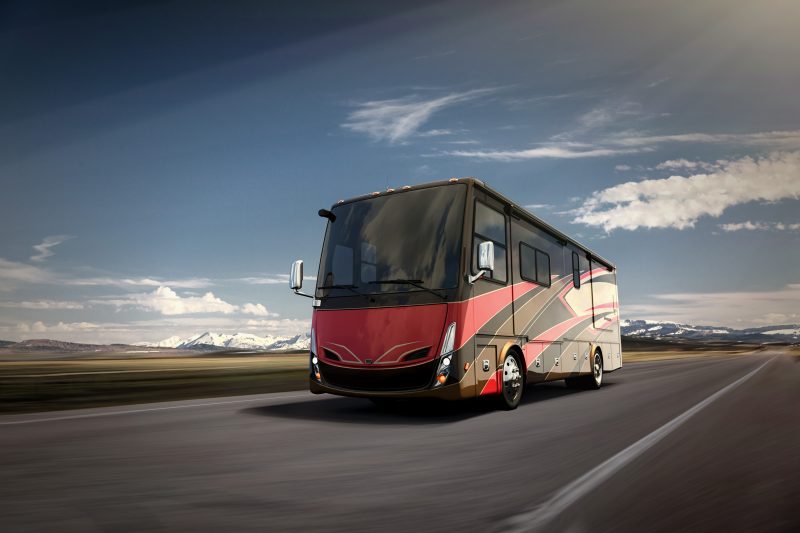
First, let’s start our discussion with a type of RV that you’ve probably heard about already – Class A diesel motorhomes or diesel pushers. These RVs are constructed on a specially-designed motor vehicle chassis. The large diesel engine on this motorhome is located in the rear of the coach, and it provides more torque compared to its gas-powered counterpart. The location of the engine also helps provide a quiet and smooth ride. The diesel engine essentially pushes the motorhome down the road. Diesel motorhomes are the epitome of luxury RVs, which makes them great for long trips and cross-country adventures. In many instances, they are the perfect RV for the full-time RVer. The diesel engine usually lasts longer and is more durable than the gas engine on other Class As but that makes them more expensive, too.
Class A Gas Motorhomes
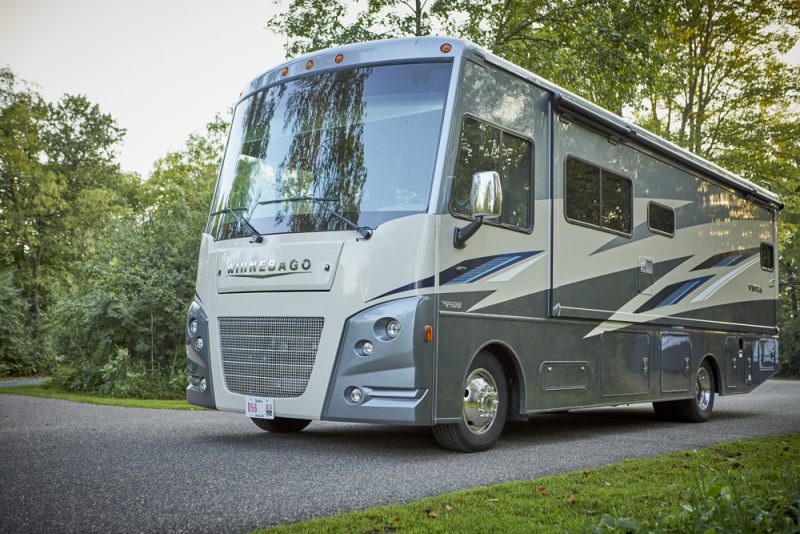
Like their diesel-engine counterparts, Class A gas motorhomes offer many of the comforts of home. This makes them a popular choice for full-time or long-term RVers. You’ll often find residential-style appliances (from refrigerators and microwaves to washer and dryers), master bathrooms, high-quality electronics, and designer furniture in this type of RV. Most also have multiple slideouts or full-length slideouts for added space. They also have plenty of storage compartments for personal belongings needed for extended travel. Both types of Class A motorhomes resemble a bus, roughly 30 to 40 feet in length, with a vertical front windshield with large windows.
Class C Motorhomes
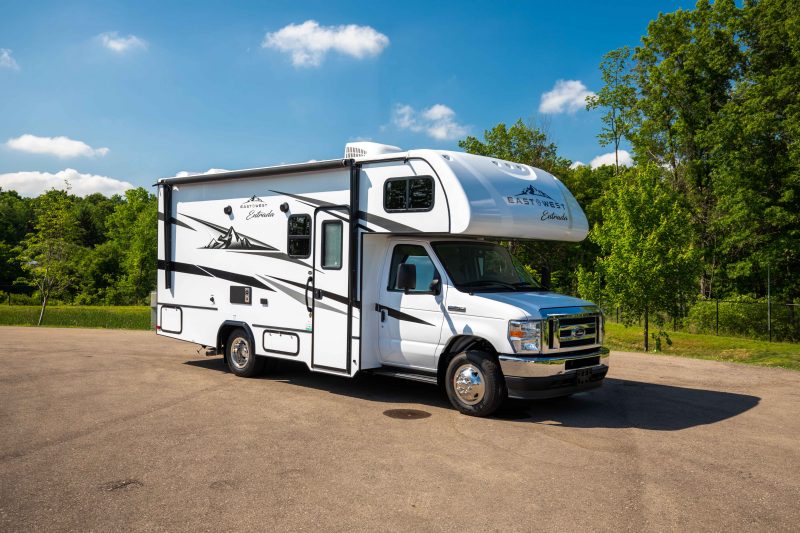
A smaller type of motorhome, Class C motorhomes are usually built on a truck chassis. Gas and diesel options are available. Some well-known manufacturers of Class C engines include Chevy, Ford, and Mercedes Benz. Class C RVs have a distinctive “cab-over” profile that makes them easy to recognize (and provides an extra bed or storage space). Many Class C motorhomes offer similar amenities to their Class A counterparts, like kitchens, bathrooms, and slideouts, just on a smaller scale. Their shorter chassis also means these RVs can go places where larger RVs won’t fit, like some state park campsites. Numerous Class C floorplans are available, making this type of RV perfect for anyone that loves remote exploring and camping – especially families and couples who travel with friends.
Class B Motorhomes
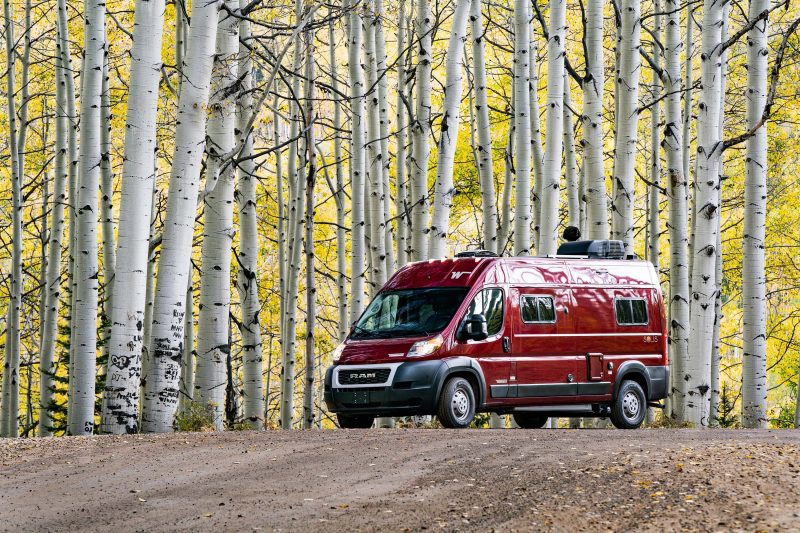
Also called B-Vans or camper vans, Class B motorhomes are the ultimate home on the road for adventurous RVers. As the name implies, this type of RV is typically built on a van chassis. They can have a gas or diesel engine. They are nimble and drive like a standard automobile, so they can easily go from camping to big-city adventures. Some even have off-road equipment options for exploring remote areas. Camper Vans typically measure between 20-25 feet in length. Don’t be fooled by that compact size; manufacturers have cleverly designed the interiors to fit all the essentials. You’ll find amenities like swiveling toilets and fold-away sinks in the wet bath of these motorhomes. And many of the sleeping spaces in Class Bs convert from seats to beds in minutes. This type of RV is most popular among solo travelers and couples.
Towable Types of RVs
Fifth Wheel Campers
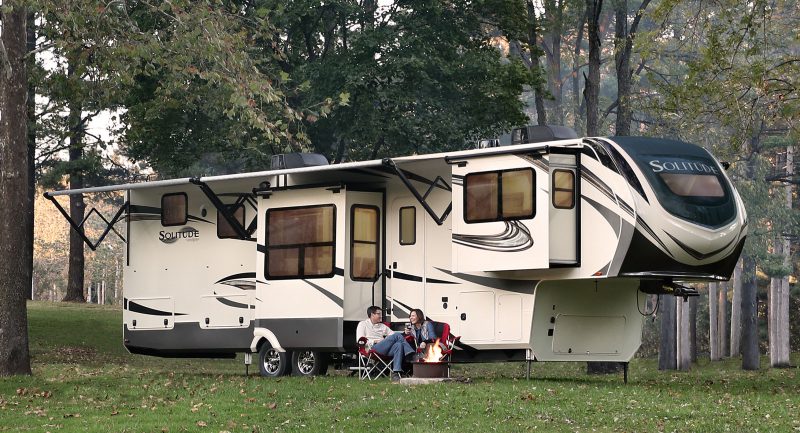
The largest type of towable RV, fifth wheel campers, are pulled by large pick-up trucks with a special fifth wheel hitch located in the bed of the truck. Because of this hitch, they have a raised forward section where you’ll typically find a bedroom or living room. Fifth wheels are some of the most spacious RVs available thanks to their extended length and slideouts. Some floorplans have up to six slideouts! This makes them a great option for large families or those who want to camp with big groups. Many fifth wheel RVers will park their RV at a campground and detach the towing vehicle for daily travel. As with any towable RV, it’s critical that the towing vehicle is rated to handle the weight of the RV plus its contents.
Toy Haulers
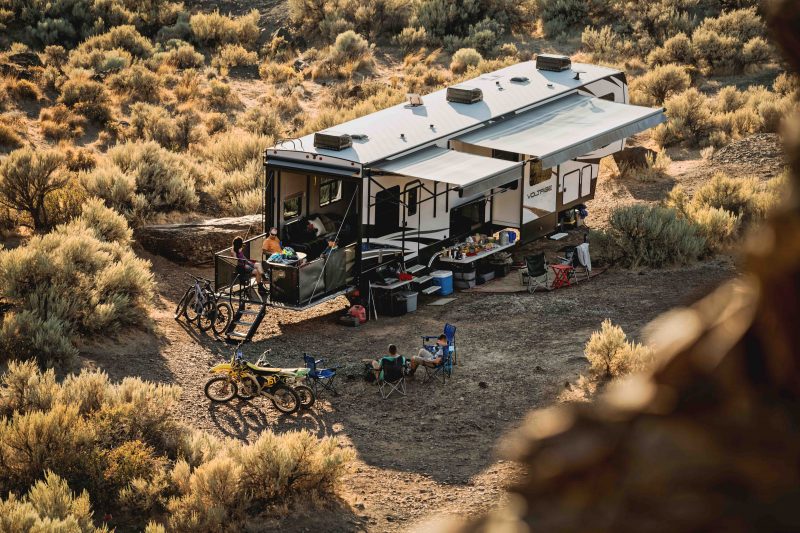
Next up are the toy haulers. Toy haulers (sometimes called sport utility RVs) are built to accommodate tons of gear and outdoor toys. Motorcycles, dirt bikes, golf carts, four wheelers, snowmobiles, kayaks, and more – you name it, these RVs will haul it. Designed with a large cargo area/garage, toy haulers have special heavy-duty doors that double as ramps for loading gear. Unlike the previous types of RV that we’ve described, toy haulers are a sub-category of RVs. Toy haulers are available in towable and motorized RV types, but most toy hauler RVs are fifth wheels. The combination of comfortable living space and a garage make these the perfect basecamp for active RVers who want to play hard wherever they travel.
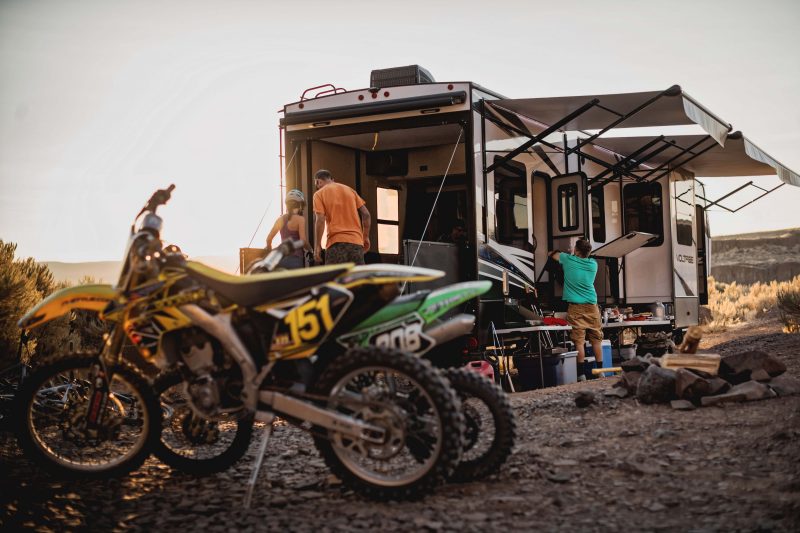
Travel Trailers
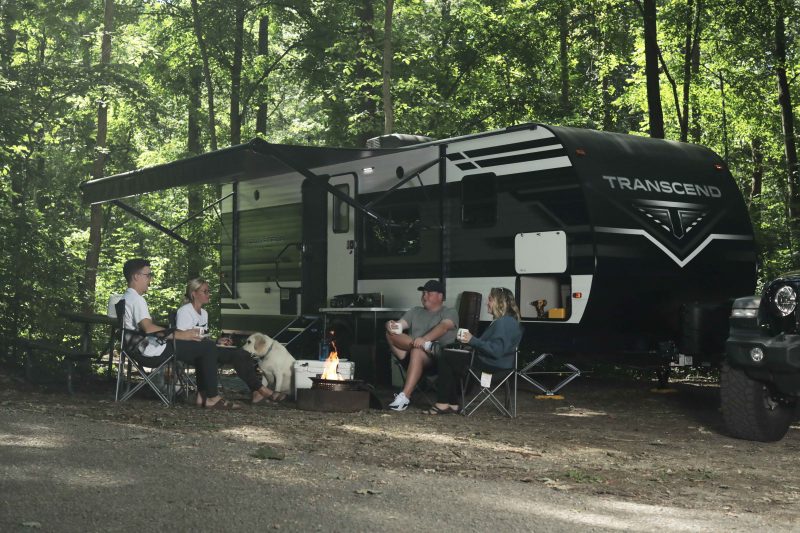
You’ve probably seen travel trailers (or conventional trailer) on the road or at a campground. This popular type of RV is towed by a bumper hitch or a frame hitch that extends from the front of the trailer. Travel trailers are ideal for any type of camper because lots of floor plans and styles are available. In fact, their weights can vary greatly – from less than 4,000 lbs to over 10,000 lbs. You can also find travel trailers that have multiple slideouts for increased living areas. Travel trailers are easier to detach and setup in a campground than fifth wheels. They provide the freedom of having a vehicle to enjoy their destination and a complete home unit wherever they travel. This makes travel trailers a favorite type of RV for many.
Teardrop Campers / Tiny Trailers
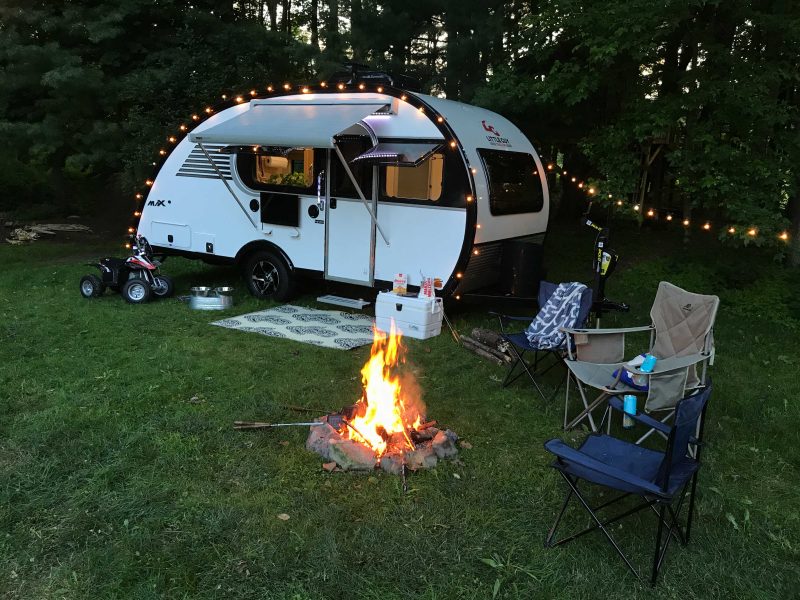
It’s easy to recognize this type of RV, thanks to its distinct teardrop shape. Teardrop trailers are ideal for weekend travelers who want basic amenities when they travel. The simplest teardrop RVs are just a bedroom on wheels. Larger floorplans can contain a bed, kitchen/dining area, and wet bath. Like Class B motorhomes, teardrop RVs utilize swivel toilets, folding sinks, convertible beds, and more to make the small floorplan highly functional. Teardrop enthusiasts love the clever design and vintage aesthetic of these trailers, and they gather at rallies like Tearstock with other teardrop owners. It’s very common for these RVers to decorate their tiny trailers with retro fabrics and vintage trimmings. These RVs typically weigh less than 4,000 lbs. This type of RV is gaining popularity thanks to manufacturers, like Liberty Outdoors, who have promoted the tiny trailer movement.
Pop-Up Campers
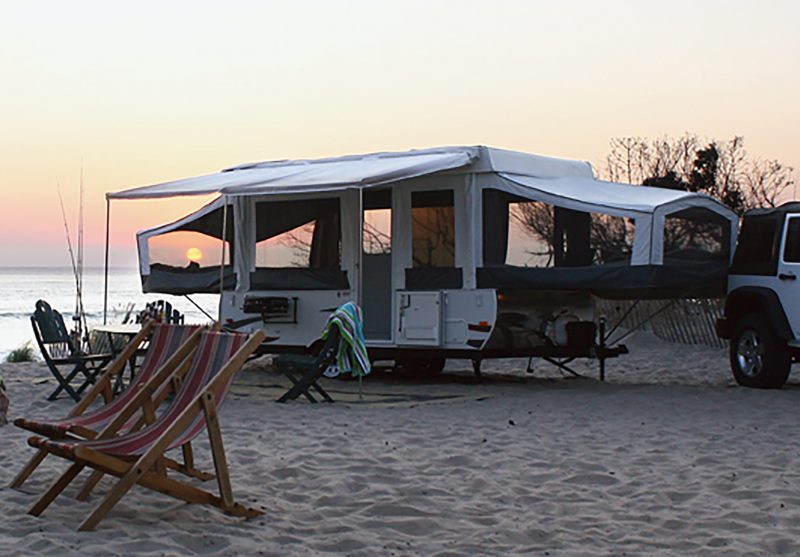
Last but not least, we’ll discuss pop-up campers. You probably spent part of your childhood in one of these RVs, if you grew up camping. These family-friendly RVs have a hard base with canvas sides that extend (or “pop-up”) to provide sleeping space. This type of RV is perfect for young families who want to camp more and avoid sleeping in a tent on the ground. Pop-ups have been the constant fixture in family camping throughout the years because of their affordability. Also, they are lightweight, which means they can often be towed by the family vehicle. These towable RVs make camping more comfortable and are available with a variety of options.
To summarize, there are many types of RVs available today. Knowing the main differences between them will help you choose the right RV for your family. Ready to learn more? Check out this post where we make sense of some of the RV terms you might have heard thrown around by others.